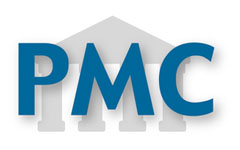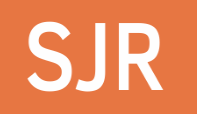Factors associated to risk of malnutrition amongst elderly women in low-income communities
Abstract
Objective: The present study aimed to identify the prevalence and the factors associated with the risk of malnutrition in elderly women.Methods: The study deals with a cross-sectional design, with a sample of 222 women in the age group from 60 to 96 years of age. An interview was carried out containing socio-demographic variables, clinical conditions, and behavioral aspects. The statistical analysis was accomplished via calculation of the respective prevalence ratios (PR) in the Poisson regression, p<0.05.
Results: A prevalence of 33.8% (n=75) of women, considered with a malnutrition risk or undernourished, which started from the hierarchical multivariate analysis, was identified. A significant association with the age group ranging from 70 to 79 years of age (PR=2.1; CI 95%: 1.3-6.7), low education level (PR=3.1; CI 95%: 1.0-11,6), living with other people (PR=2.0; CI 95%: 1.0-4.6), the presence of depressive symptomatology (PR=2.1; CI 95%: 1.0-7.1), absence of administration of medication (PR=3.0; CI 95%: 1.1-7.6), having had some food privation along their lives (PR=3.1; CI 95%: 1.3-9.6), and with less than 75% of the time of physical activity in their leisure time (PR=2.0; CI 95%: 1.0-4.7) were found.
Conclusion: There is a high percentage of elderly women in situation of malnutrition risk, and the associated factors to the condition suggests a complex causal net in the determination of the nutritional state.
Authors
Downloads
Keywords
- Nutritional status
- Health status
- Socioeconomic factors
References
Najas MS, Nebuloni CC. Avaliação nutricional. En: Ramos
LR, Toniolo Neto J (eds). Geriatria e geontologia. Barueri:Manole; 2005; p. 299-314.
Da Cruz IBM, Almeida MSC, Schwanke CHA, Moriguchi
EH. Prevalência de obesidade em idosos longevos e sua
associação com fatores de risco e morbidades cardiovasculares.
Rev Assoc Med Bras. 2004; 50: 172-7.
Rui-Arregui L, Castillo-Martínez L, Orea-Tejeda A, Mejía-
Arango S, Miguel-Jaimes A. Prevalence of self-reported
overweight-obesity and its association with socioeconomic
and health factors among older Mexican adults. Salud
Publica Mex. 2007; 49: 482-7.
Chang VW, Alley DE. The changing relationship of obesity
and disability, 1988-2004. JAMA. 2007; 298: 2066-7.
Cervi A, Franceschini SCC, Priore SE. Análise crítica do
uso do índice de massa corporal. Rev Nutr. 2005; 18: 765-
ABEP. Associação Brasileira de Empresas de Pesquisa.
Critério de Classificação Econômica Brasil 2008. [citado 20 mar
. Disponível em: http://www.abep.org/novo/
Content.aspx?ContentID=139.
Guigoz Y, Vellas B. The Mini Nutritional Assessment
(MNA) for grading the nutritional state of elderly patients:
presentation of the MNA, history d validation Nestrle Nutr
Workshop Ser Clin Perfrom Programme. 1999; 1: 3-11.
Moreira TMM. Nutritional screening and assessment of an elderly
group of Lar de São José of Covilhã. Porto: Universidade do
Porto; 2009.
Benedetti TRB, Mazo GZ, Barros MVG. Aplicação do
questionário internacional de atividades físicas (IPAQ)
para avaliação do nível de atividades físicas de mulheres
idosas: validade concorrente e reprodutibilidade testereteste.
Rev Bras Cienc Mov. 2004; 12: 25-34.
Organização Mundial da Saúde. Classificação Internacional de
Doenças e problemas relacionados à saúde. Décima revisão. São
Paulo: Centro Colaborador da OMS para Classificação de
Doenças em Português; 1993.
Lawton MP, Brody EM. Assessment of older people: selfmaintaining and instrumental activities of daily living.
Gerontologist. 1969; 9: 179-86.
Almeida OP, Almeida AS. Confiabilidade da versão
brasileira da escala de depressão em geriatria (GDS) versão
reduzida. Arq Neuropsiquiatr. 1999; 57: 421-6.
Pfeiffer E. A short portable mental status questionnaire
for the assessment of organic brain deficit in elderly
patients. J Am Geriatr Soc. 1975; 23: 433-41.
Barros AJD, Hirakata V. Alternatives for regression in
cross-sectional studies: an empirical comparison of models
that directly estimate the prevalence ratio. BMC Med Res
Methodol. 2003; 3: 21.
Victora CG, Uttly SR, Fuchs SC, Olinto MTA. The role of
conceptual frameworks in epidemiological analysis: a
hierarchical approach. Int J Epidemiol. 1997; 26: 224-7.
Roberts KC, Wolfson C, Payette H. Predictors of nutritional
risk in community-dwelling seniors. Can J Public Health.
; 98: 331-6.
Fisher SG. Community-based nutrition programs and
services are needed to improve the health of older adults.
J Am Diet Assoc. 2007; 107: 265-72.
Martins IS, Meléndez GV, Cervato AM. Estado nutricional
de grupamentos sociais da área metropolitana de São
Paulo, Brasil. Cad Saude Publica. 1999; 15: 71-8.
Coqueiro RS, Barbosa AR, Borgatto AF. Nutritional status,
health conditions and socio-demographic factors in
the elderly of Havana, Cuba: data from SABE Survey. J
Nutr Health Aging. 2010; 14: 803-8.
Azevedo LC, Fenilli M, Neves L, Almeida CB, Farias MB,
Breitkopf T. Principais fatores da mini-avaliação nutricional
associada a alterações nutricionais de idosos hospitalizados.
Arq Cat Med. 2007; 36: 7-14.
Monteiro CA. A dimensão da pobreza, da fome e da
desnutrição no Brasil. Estud Av. 1995; 9: 195-207.
Rosa TEC, Benicio MHD, Latorre MRDO, Ramos LR.
Fatores determinantes da capacidade funcional entre idosos.
Rev Saude Publica. 2003; 37: 40-8
Virtuoso Júnior JS, Guerra RO. Fatores associados às
limitações funcionais em idosas de baixa renda. Rev Assoc
Med Bras. 2008; 54: 430-5.
The copy rights of the articles published in Colombia Médica belong to the Universidad del Valle. The contents of the articles that appear in the Journal are exclusively the responsibility of the authors and do not necessarily reflect the opinions of the Editorial Committee of the Journal. It is allowed to reproduce the material published in Colombia Médica without prior authorization for non-commercial use




















